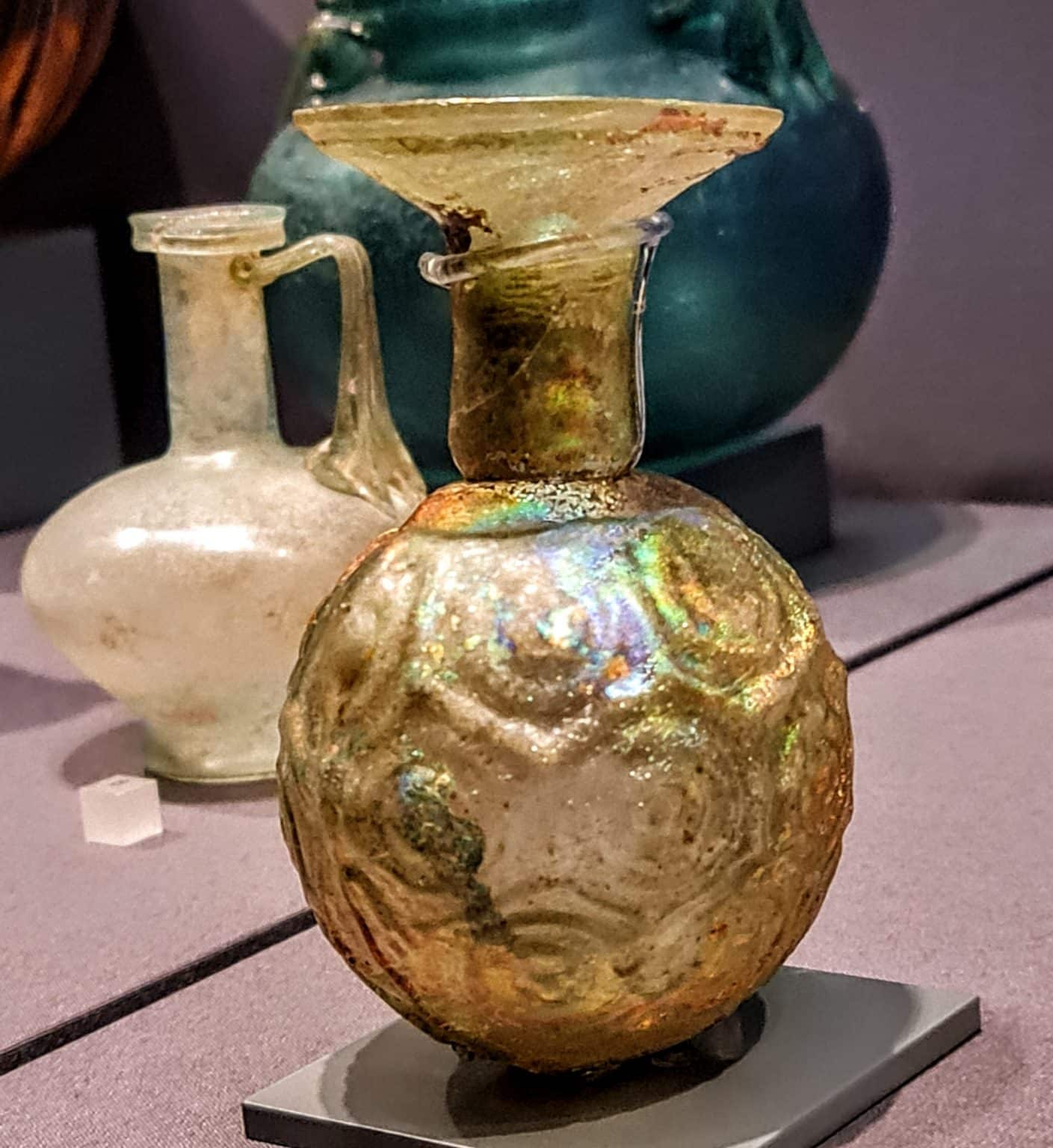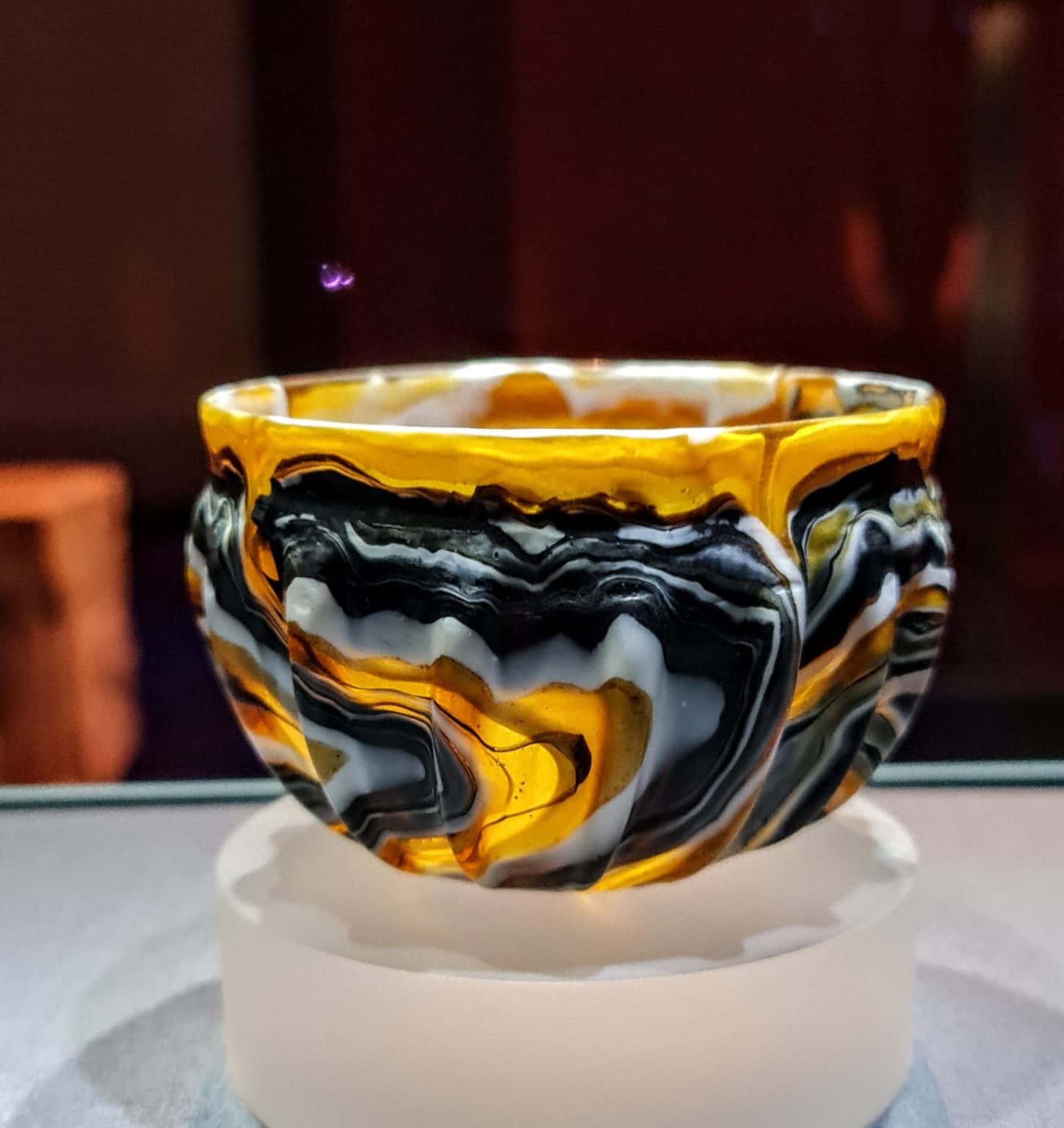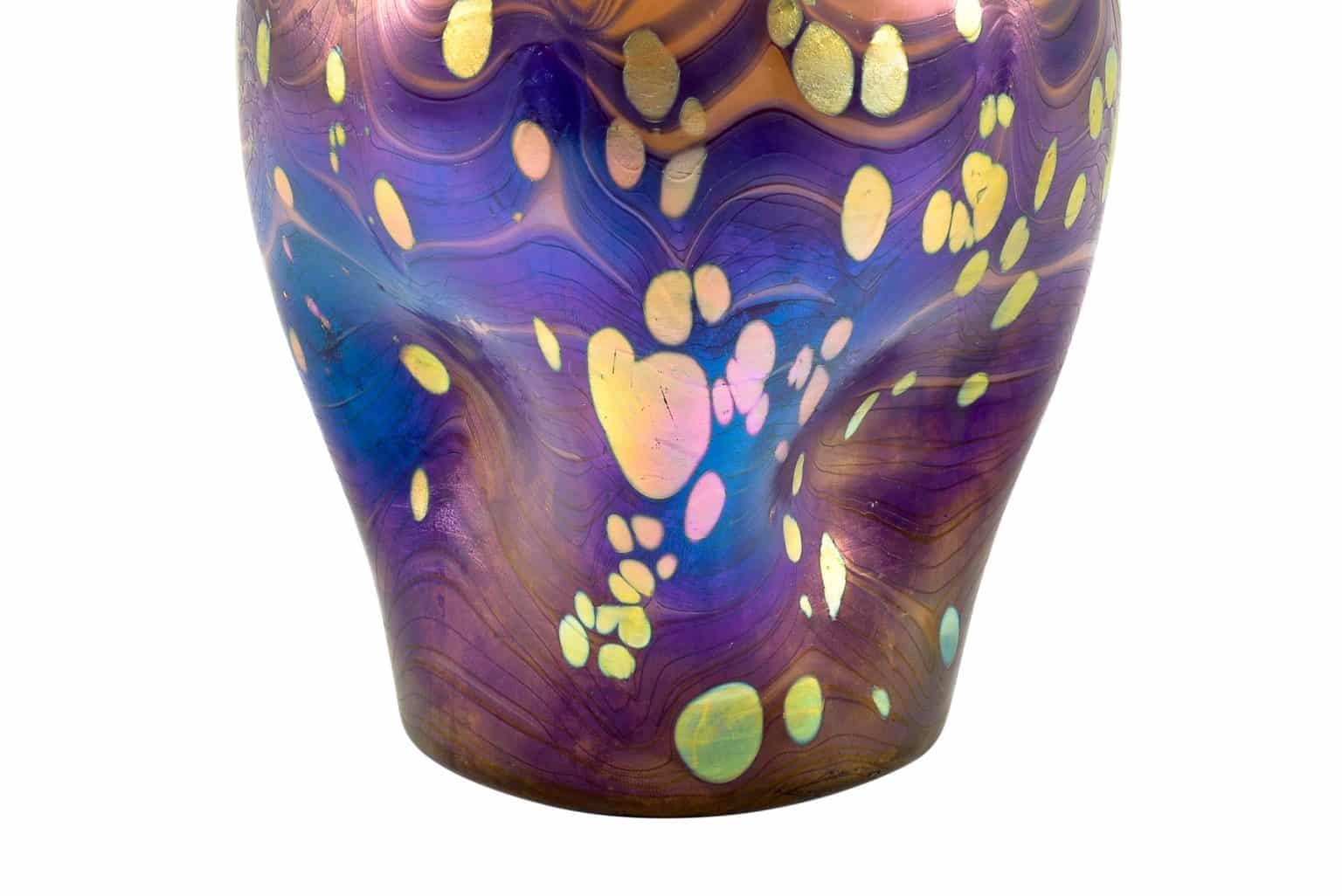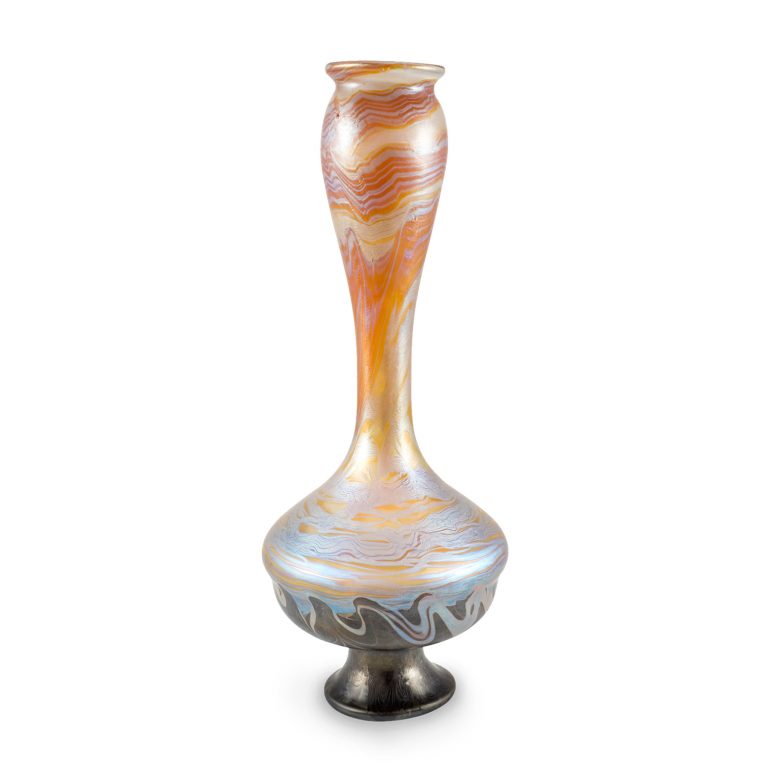Loetz vases have a long tradition that has changed many times since the 19th century, and the glass art itself has an even longer history. Back in ancient Egypt, over 3000 years ago, glassblowers made vases that are not dissimilar to the Loetz vases of today. The ancient Egyptians produced glass and glass vases from quartz mixed with plant ash in furnaces. Most of these glass vases were made in blue, the color of the Nile, the life source of the Egyptians. However, the glassblowers also succeeded in the difficult production of red glass. Here the glass had to be fired in an environment without oxygen so that the copper did not oxidize and turn blue. The production of red and blue glass was a sacred art among the Egyptians. The recipe of glass production was also known as “the secret of the pharaohs”. And, as the name suggests, glass vases and glass jewelry were reserved exclusively for the pharaohs.


Just as ideas, themes and motifs from nature were adopted in the production of Loetz vases, such as the shape of flower calyxes or the patterns of blossoms and plant leaves, so too did the ancient Egyptians adopt forms from nature in their glass vases. At that time, however, the patterns had a closer resemblance to leaves, were less colorful and were kept in the colors beige, yellow or brown. But the basic idea of the Egyptians was the same as that of many glass artists of the 19th and 20th centuries. Shapes and colors from nature were adopted and captured in glass art.
In the 19th century, historicism was predominant in glass art and Loetz was also dominated by historicism at first. It was not until much later that those simpler forms, inspired by nature, would prevail. In 1879 Susanne, Johann Loetz’s widow, handed over the company to her grandson, Maximilian von Spaun. Together with Eduard Prochaska, he modernized the company and introduced innovations and new techniques to the glass art of historicism. For example, intarsia glass, octopus glass or the very popular marbled glass, which imitated the appearance of precious stones.


Successes and prizes followed in Brussels, Munich and Vienna, as well as at the World Exhibition in Paris, the Exposition Universelle, in 1889. However, the great success did not come. And to this day the Loetz glass vases from the period of historicism are less in demand and are also traded as less valuable.
It was in 1897 when Maximilian von Spaun first admired Tiffany Favrile glass in Bohemia and Vienna. Its great success did not go unnoticed by him and he decided that the Art Nouveau style was the direction in which Loetz glass should also develop to.
The next years, until the turn of the century, were to be Loetz’s most successful and artistically exciting years. The glass factory produced a new generation of glass vases. The inspiration for the vases was to be found in nature itself. Vases like calyxes, implied petals, or meandering shapes like rivers decorated the iridescent colored glass. Fanciful vases, many shimmering like opal, were created at that time.


With the new style Loetz also collaborated with very famous artists, such as Josef Hoffmann, Koloman Moser, the Wiener Werkstätte or Franz Hofstötter. All of them created designs and sketches for Loetz vases. The highlight of this collaboration was in 1900 when Loetz made history at the Paris World Exhibition. Along with Tiffany, Gallé, Daum and Lobmeyr, Loetz won the Grand Prix. The company received the award for the Phenomenon Series, created in collaboration with Hofstötter.
In the Nikolaus Kolhammer Art Gallery, a Loetz vase, designed by Franz Hofstötter for that very Paris World Exhibition in 1900, was also offered and sold recently. It is the Exhibition Phenomenon Genre 387 ,,Pink with Silver”. This vase is a typical example of Hofstötter’s designs, as the surface design is inspired by nature. All the elements, earth, air and fire, which must be united to create iridescent glass, are represented in the vase. The base of the vase, in dark brown, is held in the color of fertile earth. This is followed by woven, flowing threads in silver and light blue that meander along the vase. They are interpreted as air and atmosphere, which are followed by more orange and pink threads that can be seen on the vase like fire itself, giving it an almost glowing impression.












